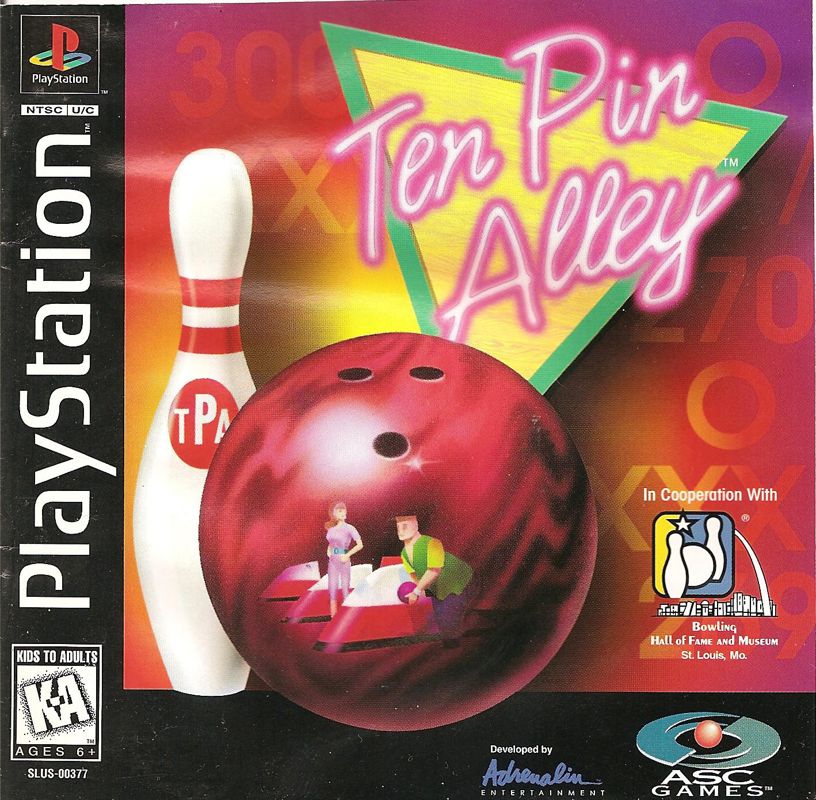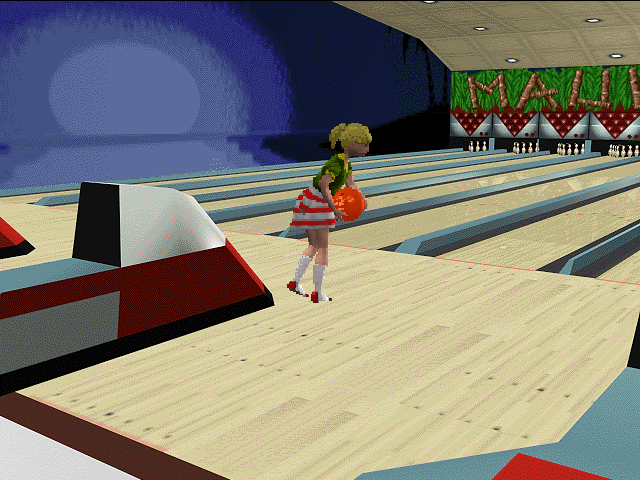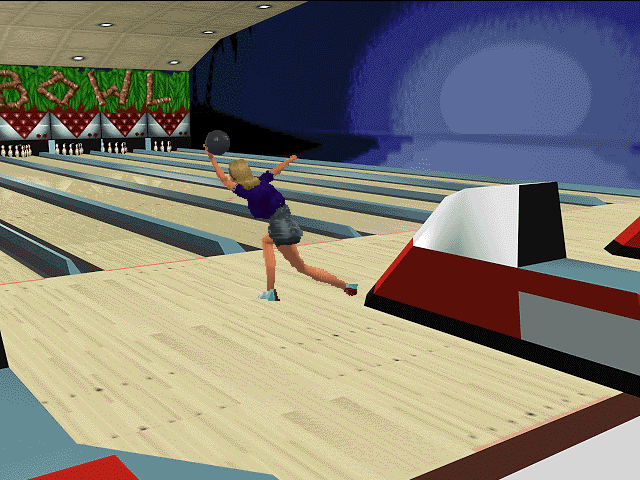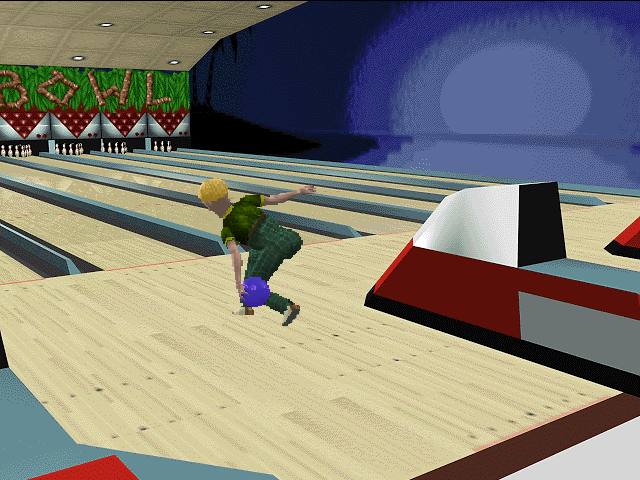Retro Replay Review
Gameplay
Ten Pin Alley delivers a straightforward yet surprisingly deep bowling experience by combining intuitive controls with a layered character system. Players start by choosing one of eight distinct bowlers, each with unique ratings in power, release, spin, and hand usage. This initial choice influences how your ball behaves on the lane, encouraging experimentation to find the style that best suits your play.
(HEY YOU!! We hope you enjoy! We try not to run ads. So basically, this is a very expensive hobby running this site. Please consider joining us for updates, forums, and more. Network w/ us to make some cash or friends while retro gaming, and you can win some free retro games for posting. Okay, carry on 👍)
The core bowling mechanic revolves around a three-click meter system, reminiscent of the Links golf series. First, you select the angle using the lane arrow, then position your bowler sideways, and finally manage the bowling meter to set spin velocity, power, and release point. The timing challenges add tension and reward precision, making each frame feel like a test of your reflexes and strategic setup.
Multiple modes—single game, league, amateur tournament, and pro tournament—extend replayability and keep you engaged long-term. If you’re just looking for a quick ten-pin fix, the single-game mode is a perfect pick-up-and-play option. For players craving structure, league and tournament modes simulate a professional bowling circuit, complete with standings and bracket eliminations.
Customization options further enrich gameplay. You can tweak your bowler’s appearance—shirt, hair, pants, and skin color—to create a personalized avatar. While the visual edits are superficial, they offer a sense of ownership over your character. Meanwhile, upgrades in power and release accuracy come from winning matches in higher-stakes tournaments, giving a tangible reward to your on-lane successes.
Graphics
At the time of its release, Ten Pin Alley’s visuals were a solid showcase of early 3D bowling action. The lanes and pins are crisply rendered, and the overhead cameras track the ball’s trajectory with clarity. When you release the ball, the subsequent animation—showing spin, curve, and pin impact—offers satisfying feedback that ties directly into your input choices.
Character models are functional but stylized rather than realistic. Each of the eight bowlers has a distinct look, but facial animations and body movements can feel a bit stiff. That said, the emphasis remains on the ball’s path and the pin collision effects, which feel weighty and responsive enough to feel rewarding when you nail a strike.
Lighting and textures across the alleys vary by venue, from glossy wood lanes in local centers to the more polished floors of professional tournaments. Background crowds and ambient sounds add to the atmosphere. While not cutting-edge by modern standards, the graphics hold up well for what is essentially a sports simulation focused on physics rather than high-end visuals.
On Windows, the game supports up to ten human or CPU players in hot seat and online modes. The UI scales neatly for multiplayer menus, making it easy to keep track of scorecards. The menus themselves are cleanly designed, letting you dive quickly into a new game without wading through clutter.
Story
Ten Pin Alley does not offer a traditional narrative or character-driven storyline. Instead, the “story” unfolds through your progression in league and tournament play. Starting as an amateur bowler with modest stats, you carve out your reputation by winning matches and advancing through increasingly competitive brackets.
Each mode presents its own arc: the amateur tournament serves as your introduction, where wins unlock access to pro events that feature stiffer competition and larger crowds. This tournament ladder provides a natural sense of growth and stakes, as each victory not only boosts your standing but also awards small stat increases.
While there’s no cutscene drama or plot twists, the game’s implicit storyline is that of personal improvement and friendly rivalry. Building your bowler from an underdog to a pro champion offers its own satisfying narrative, driven by gameplay rather than cutscenes or voiced dialogue. For fans of sports sims, this progression can feel just as compelling as any story-driven campaign.
Overall Experience
Ten Pin Alley strikes a good balance between arcade simplicity and realistic bowling simulation. The three-click meter system is easy to learn but hard to master, offering a satisfying skill ceiling for dedicated players. Casual gamers can enjoy quick matches, while bowling enthusiasts will find depth in fine-tuning spin, power, and release.
Replay value is high thanks to multiple modes and the ability to play with up to ten people. Hot seat and online options make this a solid choice for group gatherings or casual competitive sessions. The character customization and stat progression in tournaments add layers of engagement that keep you coming back to beat your personal best or challenge a new opponent.
Graphically, Ten Pin Alley may not rival modern sports titles, but it delivers clear, functional visuals that emphasize gameplay over flash. The sound design—complete with ambient crowd noise and the satisfying crack of pins—is modest but effective in creating an immersive bowling alley atmosphere.
Overall, Ten Pin Alley is a compelling package for anyone interested in bowling games. Its blend of accessible controls, varied modes, and incremental progression makes it a recommendable pick for solo players and groups alike. Whether you’re a casual bowler looking for a quick game or a stats-driven competitor aiming for the top league, this title offers an experience that stands the test of time.
 Retro Replay Retro Replay gaming reviews, news, emulation, geek stuff and more!
Retro Replay Retro Replay gaming reviews, news, emulation, geek stuff and more!









Reviews
There are no reviews yet.